What is the reason why the 'size' of living things has a great influence on breathing?

Many organisms take in the oxygen necessary for survival by 'breathing' and emit unnecessary carbon dioxide. Kurzgesagt , a scientific YouTube channel, explains in a comical animation movie that such breathing is actually closely related to phenomena called 'body size' and ' diffusion.'
How Large Can a Bacteria get? Life & Size 3 --YouTube
To live is to do something constantly. The cells of the human body constantly consume oxygen and burn glucose molecules to produce energy. Thanks to this energy, we are able to live.

Breathing is what the human body does to deliver oxygen to cells.
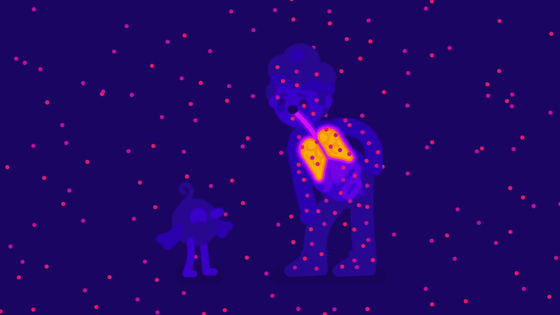
All living things somehow distribute external resources to cells in the body, but this method varies significantly depending on certain factors.
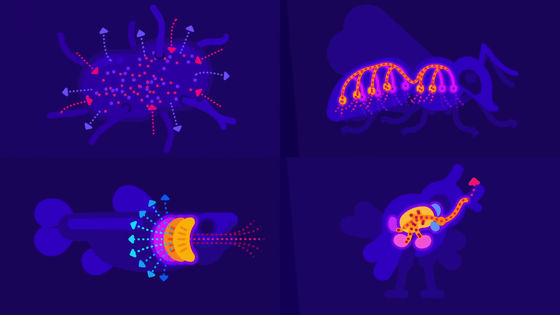
This element is 'size (body size)'.

Depending on the size of the body, the effects of simple physical laws such as temperature, microgravity, and surface tension are different. These effects may be negligible if you are large, but can be fatal if you are small.

Also, the substances needed to live differ depending on the creature.
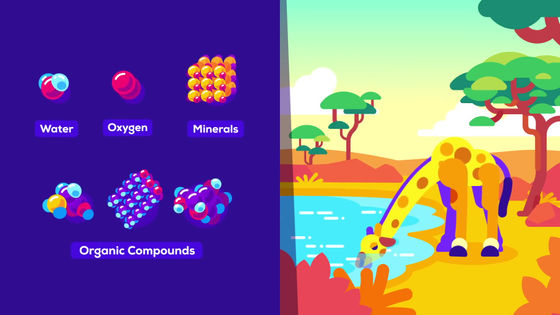
Life forms that were born very early in Earth's history did not have the ability to break down oxygen molecules to produce energy. Therefore, it was necessary for primitive life forms to devise a method of 'taking in what is needed into the body without using energy and exhaling what is needed outside the body.'
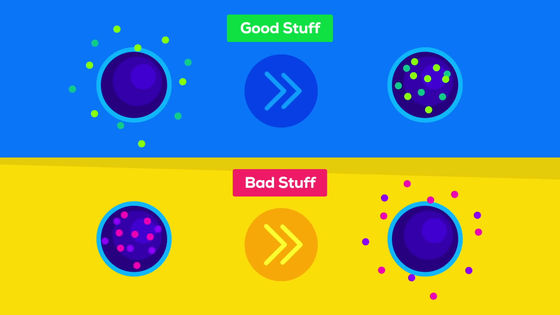
Fortunately for the protocells, they were 'small.' Primitive life forms were small enough to take advantage of the physical law of 'diffusion.'

Diffusion is a phenomenon in which molecules that move around three-dimensionally, such as liquid molecules and gas molecules, collide with each other and are scattered over a wide area.
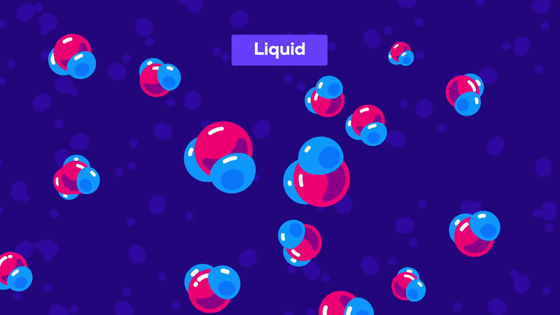
A good example of understanding diffusion is adding sugar cubes to water.
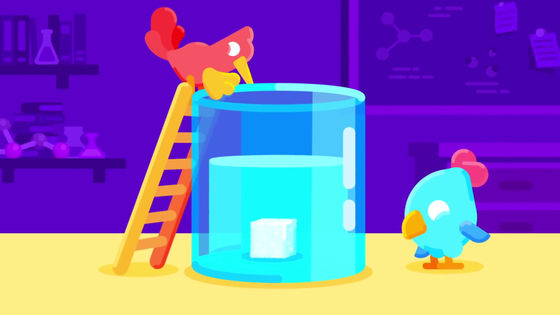
As sugar cubes gradually dissolve in water, sugar molecules begin to be pushed by water molecules and other sugar molecules in the water.

Over time, the total sugar molecules spread uniformly in the water, and the concentration of sugar water becomes uniform depending on the location. This is diffusion.
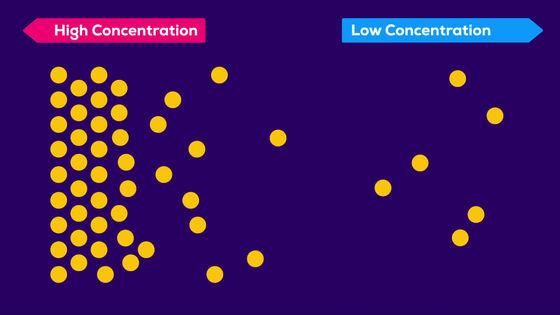
The best thing about diffusion for life is that it can be used without energy. Elements that can be used without energy, such as gravity, diffusion, and sunlight, are of paramount importance to life.

Here, let us consider the body surface of 'bacteria', which are the smallest living organisms on the earth.
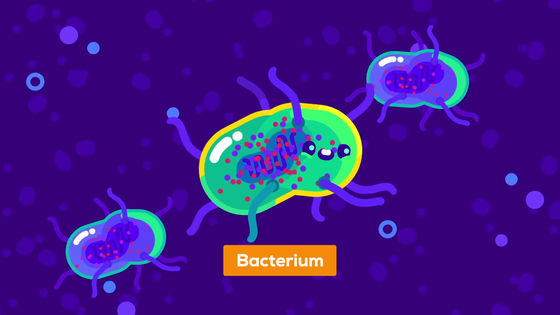
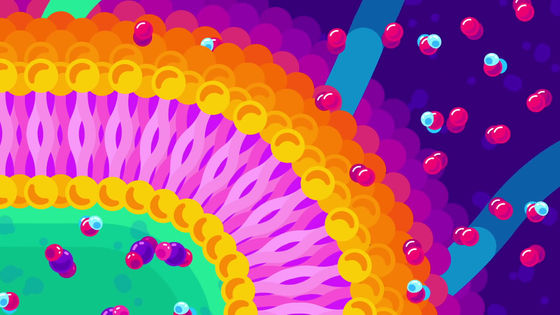
For example, in the body of a bacterium that consumes oxygen and produces carbon dioxide, such as human beings, oxygen molecules become scarce, while carbon dioxide molecules are left over. However, since diffusion acts on these molecules, the concentration of the molecules is gradually equalized inside and outside the cell membrane, oxygen molecules deficient in the body are automatically taken into the body, and excess carbon dioxide molecules are taken out of the body. It will be discharged.
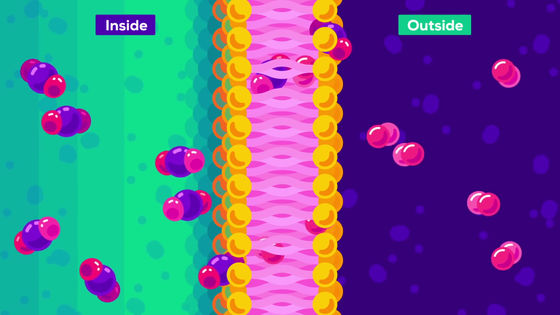
It can be said that the movement of oxygen molecules and carbon dioxide molecules using diffusion is similar to respiration. However, diffusion-induced respiration can only be performed by bacteria (1-10
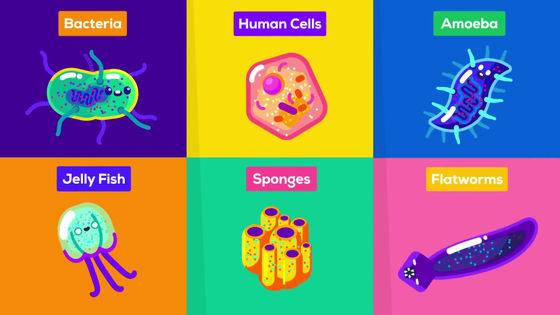
Insects spread very slowly
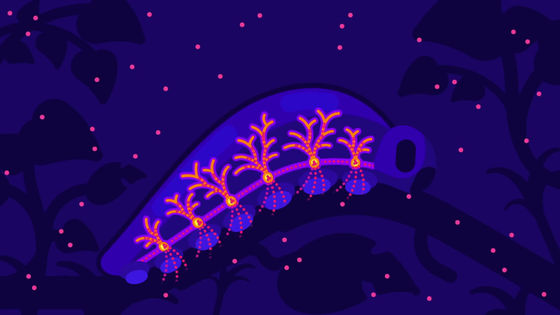
Thus, for a life that is rather large, diffusion has the problem that it gains too much energy to sustain the cells.

The fundamental problem with diffusion-induced respiration is that molecular exchange occurs only near the surface of the body and the amount that can be exchanged is limited. Therefore, only creatures with a large surface area and a small volume can live only by breathing by diffusion.
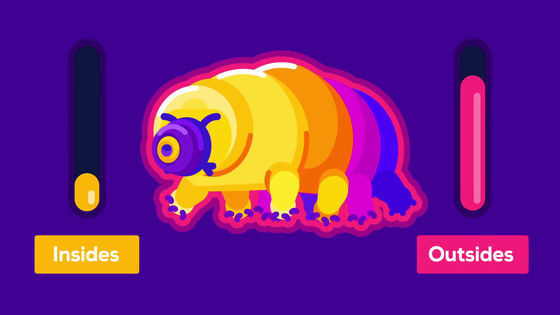
What would happen if there were a magnifying machine that could grow bacteria to the size of a blue whale?

A major obstacle for blue whale-sized bacteria is the '

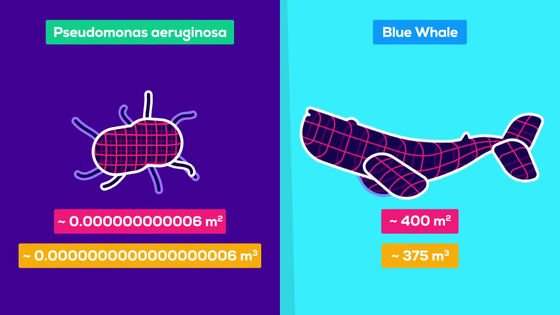
In other words, Pseudomonas aeruginosa has a large surface area compared to its volume, while whales have a large volume compared to its surface area.
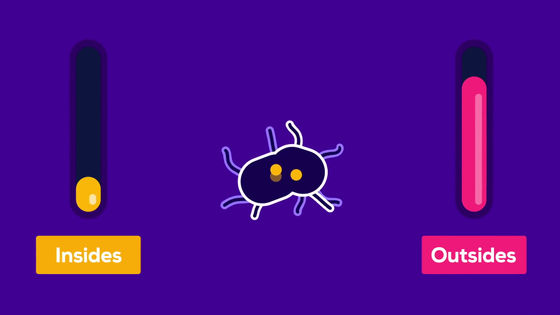
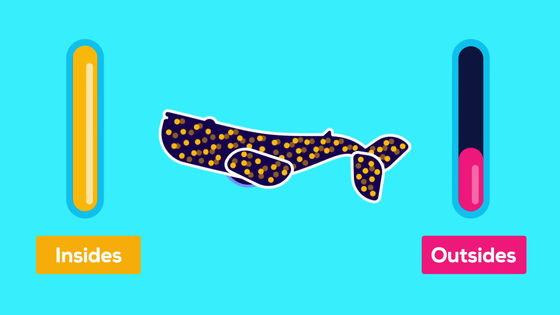
Therefore, when the bacteria are enlarged to the size of a blue whale, the volume increases in proportion to the surface area, which increases the internal space and increases the distance between the internal organs and the body surface.

When the distance between the internal organs and the body surface increases, the diffusion makes it impossible to deliver oxygen to the cells, and the enlarged bacteria die due to lack of oxygen.

Having a large body has the advantage that it is difficult to prey on, and it is easy to prey on other creatures.
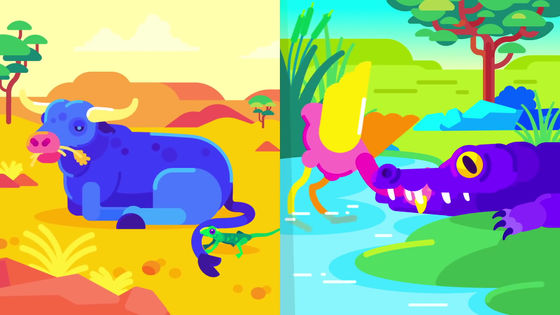
However, in order for diffusion to distribute sufficient oxygen and nutrients inside, the size of the cells must be small to some extent.
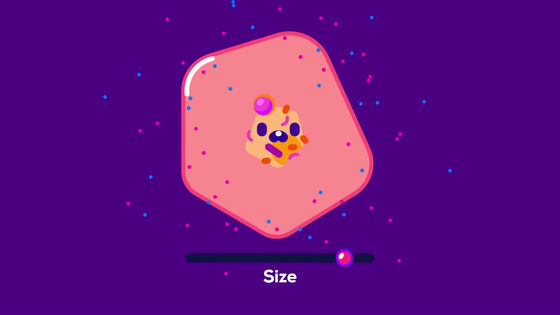
Due to the limited size of cells, life has evolved in the direction of 'increasing the number of cells.' If you have many small cells, you can make effective use of diffusion.
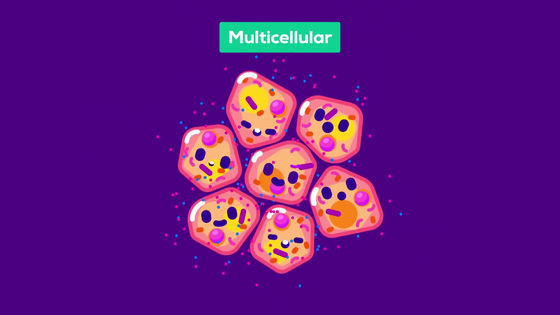
Furthermore, cells have evolved in the direction of sharing functions and specializing functions for each cell.
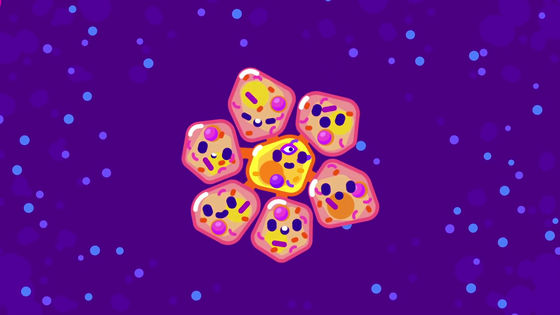
In addition, it has evolved in terms of structure, such as making a hole or cavity in the center or folding it in order to cope with diffusion even if it becomes larger as a whole.
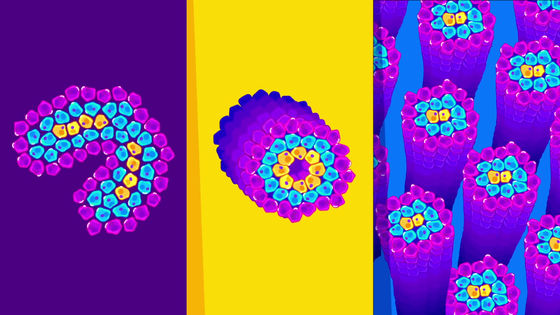
The lung is a typical example of the evolution of such a structure. The surface area of human skin is approximately 2 m², but the surface area of lungs can reach as high as 70 m².
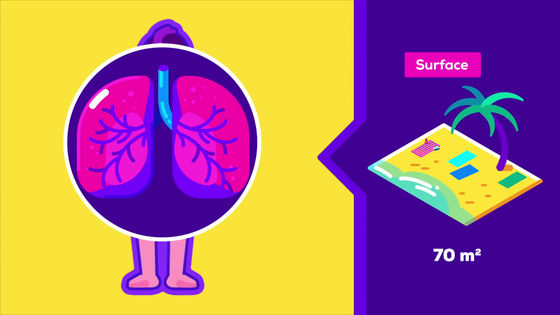
The human lung is like a sponge filled with small balloons surrounded by blood vessels. Once inhaled, the inside of the small balloon is filled with fresh air, and the blood vessels surrounding the balloon are filled with carbon dioxide-filled blood.
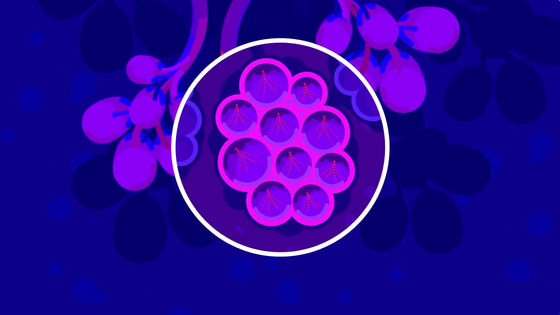
It is at this time that diffusion works. The inhaled oxygen spreads into the blood by diffusion, and carbon dioxide returns from the blood to the lungs. After that, oxygen is picked up by red blood cells, and carbon dioxide is also released to the outside of the body by exhaling.
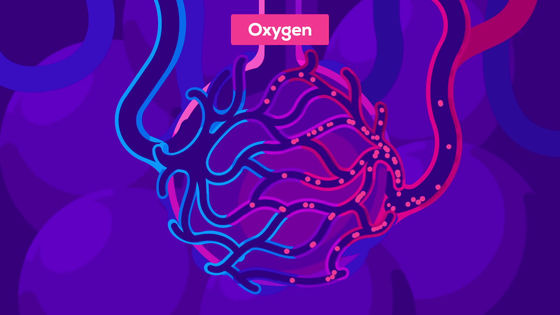
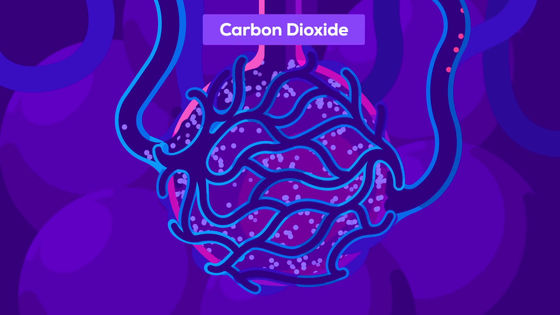
Diffusion acts only at a distance of 1 mm in the body. This is why all the cells of the human body are within 1 mm of the blood vessels.

When all the capillaries of the human body are connected together, the length is about 100,000 km, which can make two and a half rounds of the earth, and the surface area reaches 1000 m².
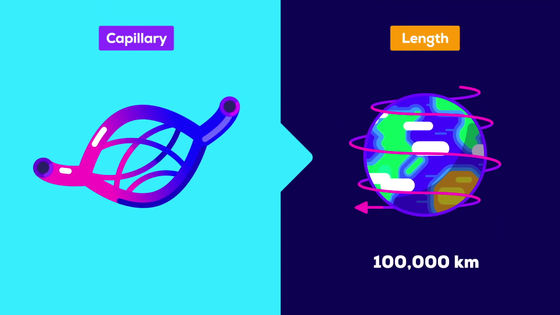
The fact that the length and surface area are large compared to the volume is the same not only in blood vessels but also in all parts that exchange something with the outside. The surface area of the gastrointestinal tract, which is the part that receives nutrition from food, is about 40 m², which is equivalent to one side of a badminton coat.
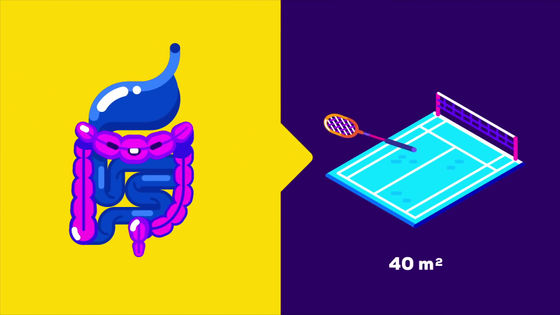
The large surface area of the place where diffusion occurs is the same for trees that perform photosynthesis, which synthesizes sugar from sunlight and the atmosphere. In the case of an orange tree with 2000 leaves, the surface area including the leaves is about 200 m², which is equivalent to one side of the basket coat, but the area 'inside the surface' of the leaves where the actual diffusion is occurring is 6000 m². To reach.
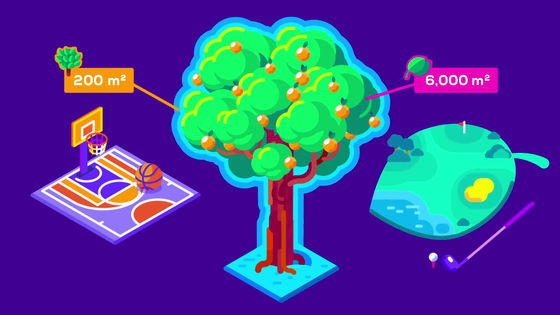
There are various life forms on the earth, and there are multiple breathing methods. However, the fact that both breathing methods use the basic principle of diffusion has not changed for billions of years. Both small and large creatures somehow expel unnecessary elements and incorporate them. Kurzgesagt concludes that large creatures simply require complex plumbing.

Related Posts:







